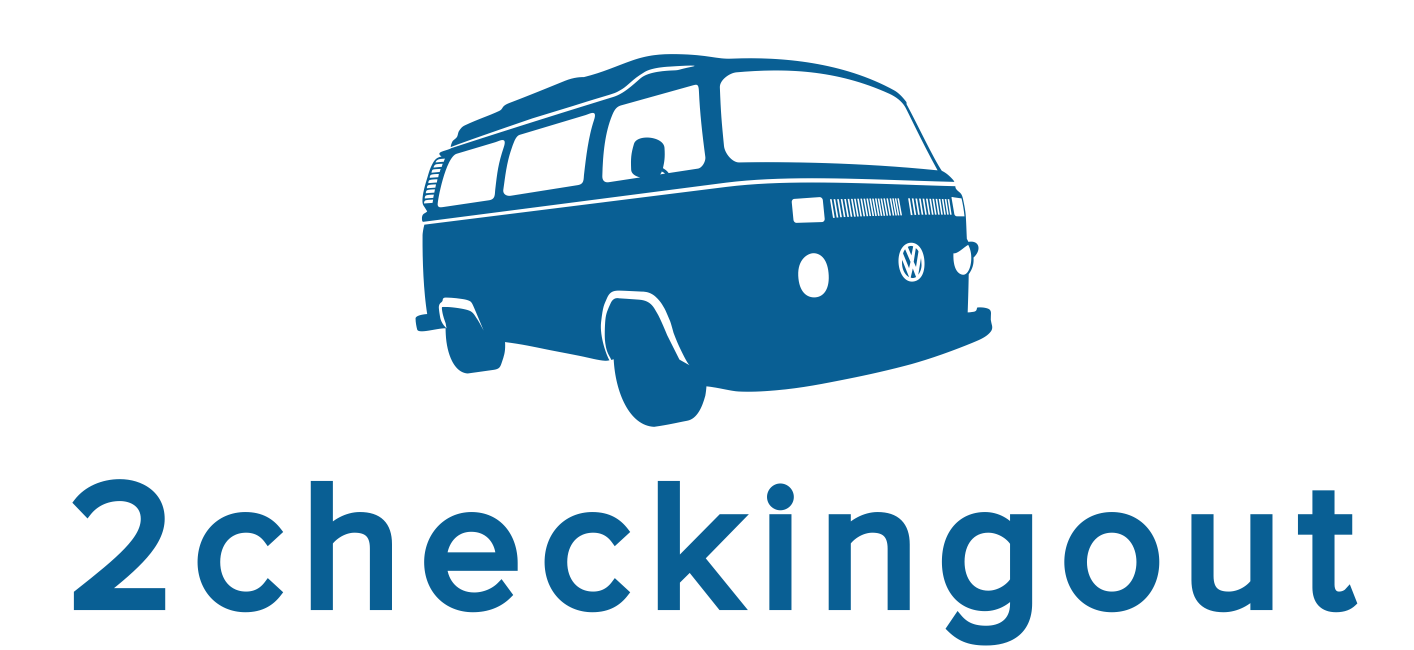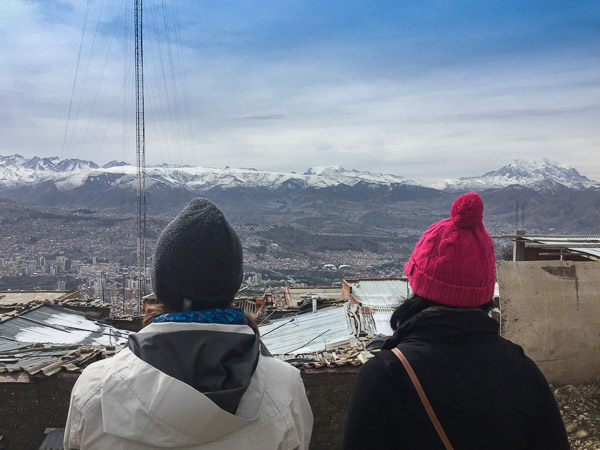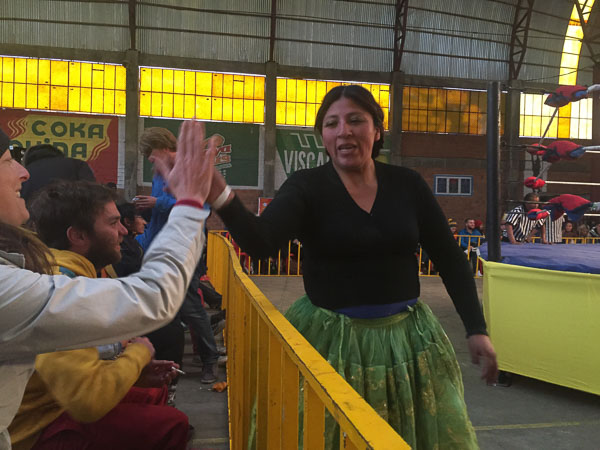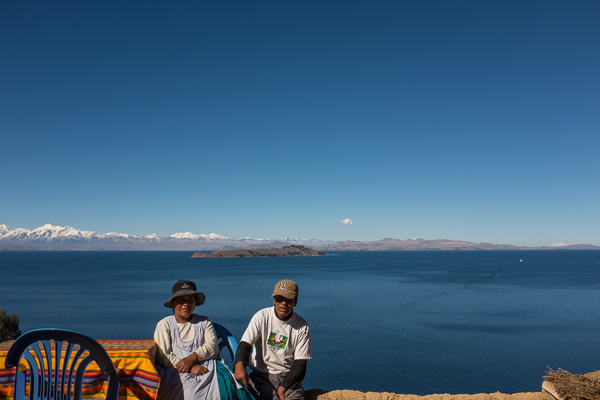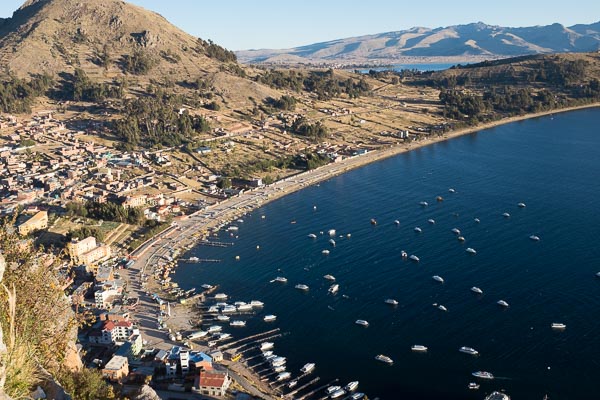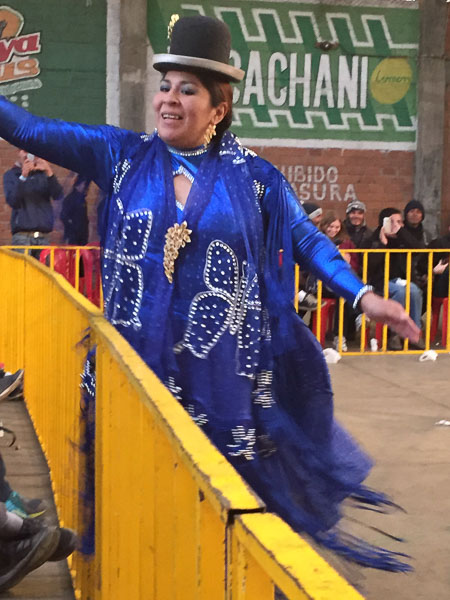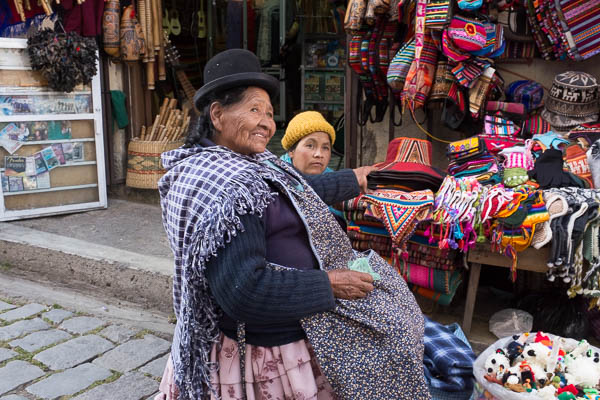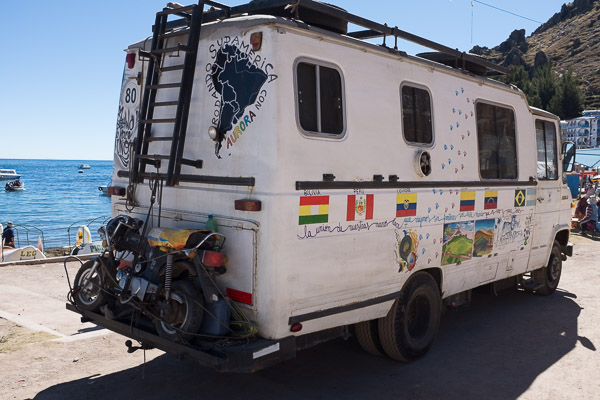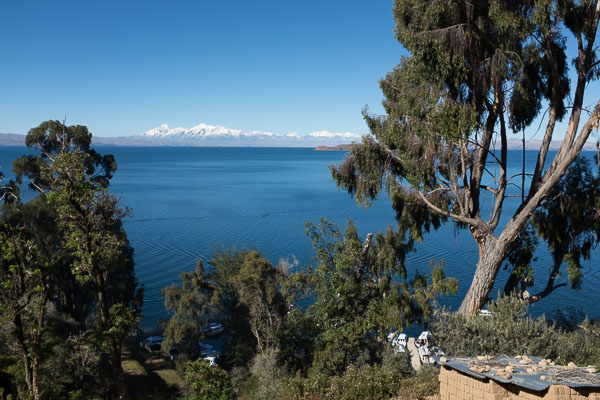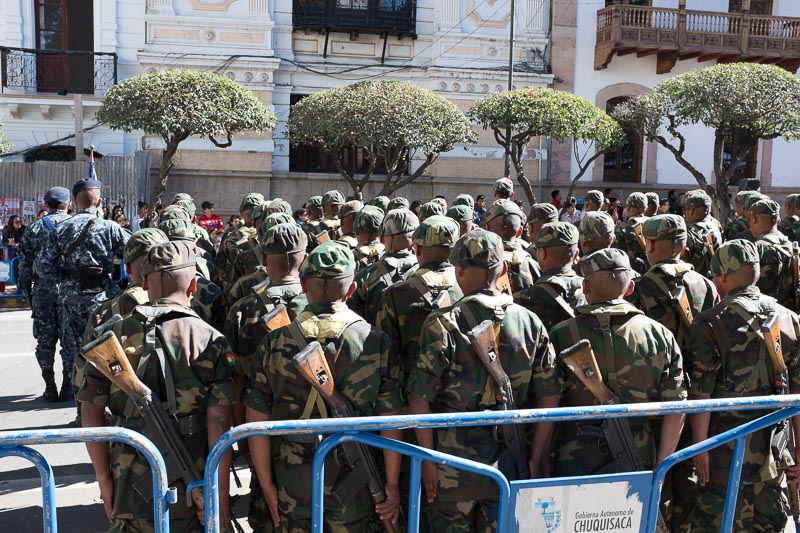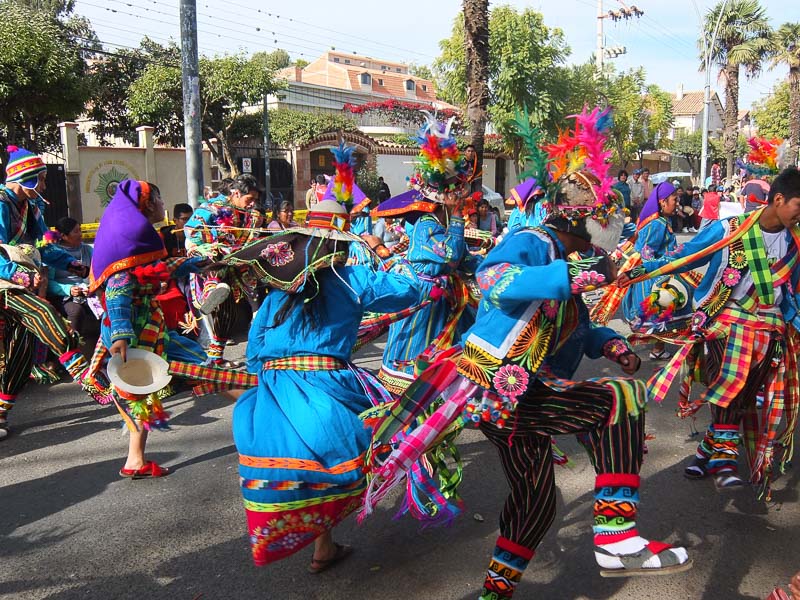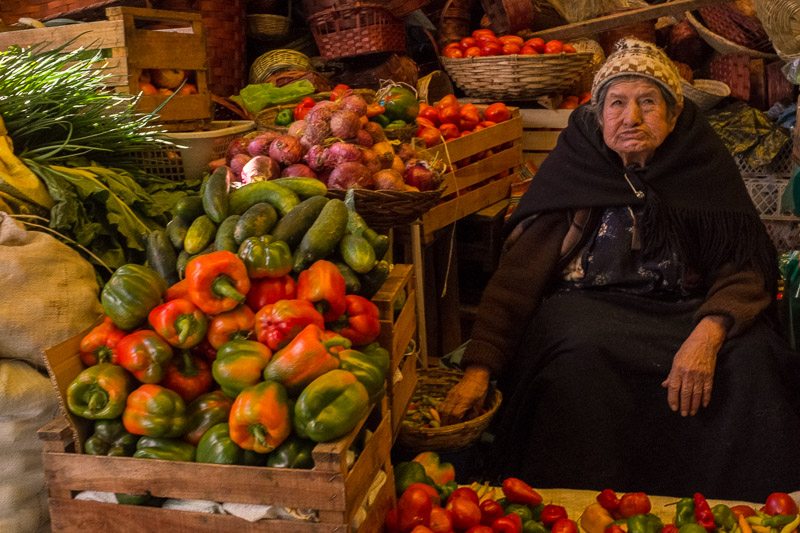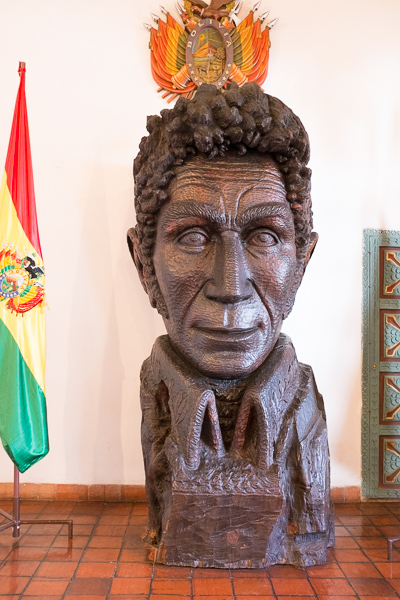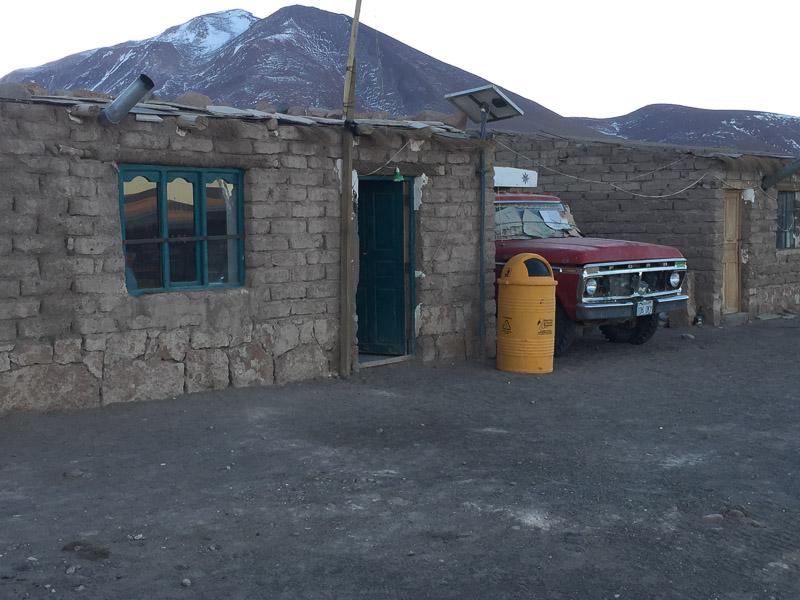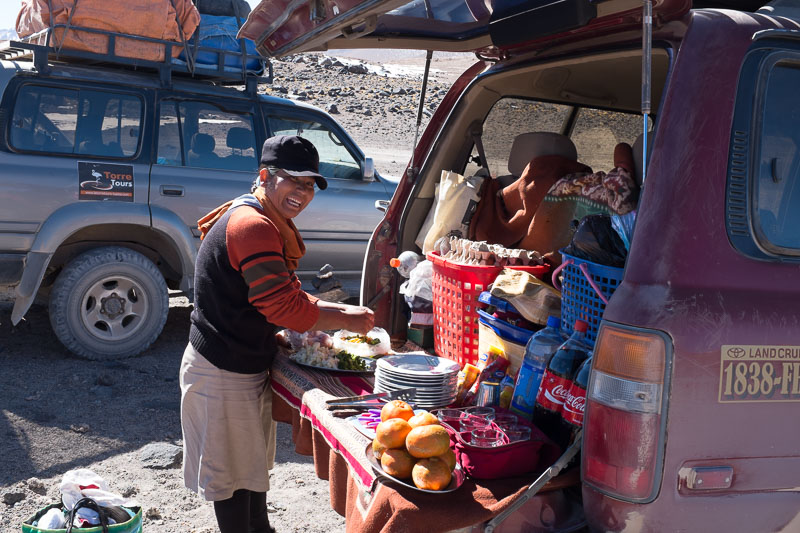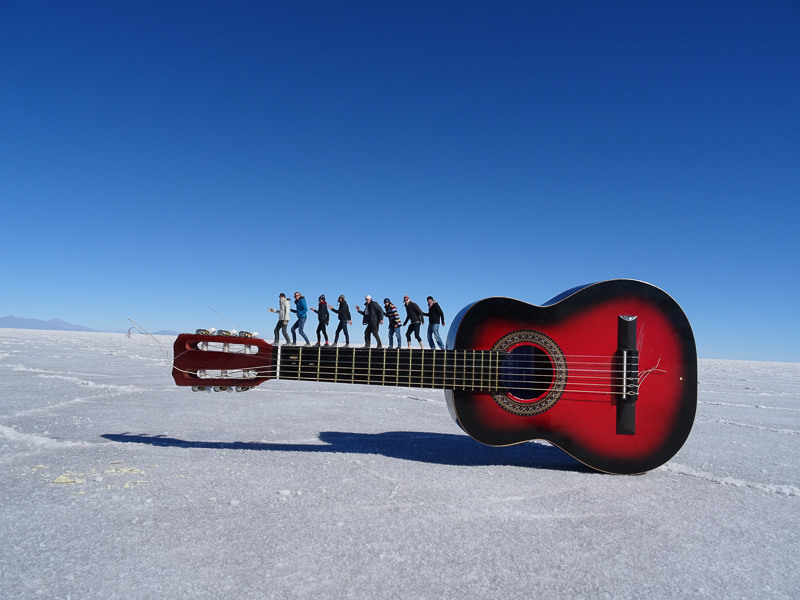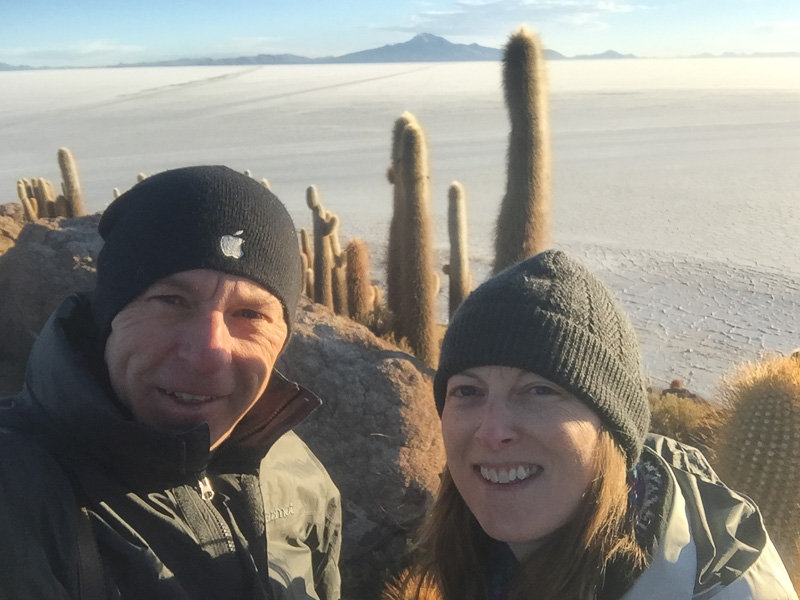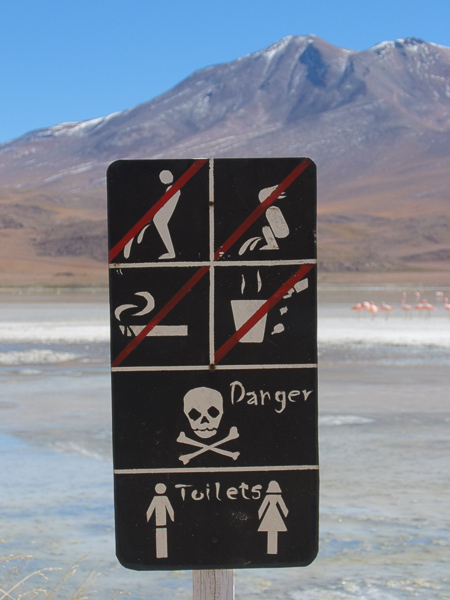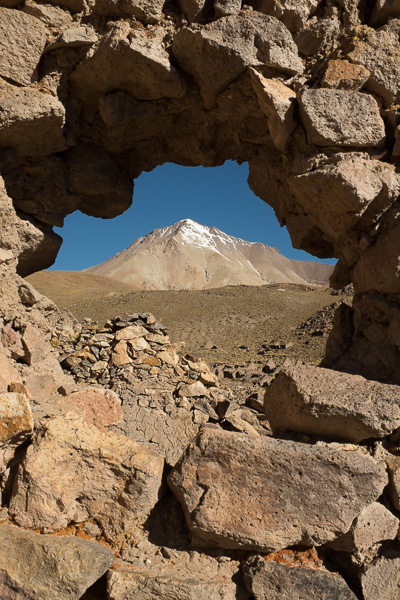Blame it on El Papa: Misadventures in La Paz
Things don't go according to plan in La Paz, Bolivia. But chilled out Copacabana on the edge of Lake Titicaca more than makes up for it.
The flight into La Paz on a cloudless day offers stunning views of the world's highest capital. Rugged mountains to either side of the plane with the city clinging at a seemly impossible angle.
The airport sits at an altitude of over 4,000 metres. The drive into the city drops nearly 700m down a long winding expressway. Along the route, when we arrived, were teams of busy bees. Some planting new flower beds, some trimming trees, some covering graffiti, and others fixing the holes in road. Somebody important is coming to town, and it's not us!
During the few days that we were in town, many thousands of dollars were being spent sprucing the place up. All this for a four-hour visit from the Pope. This papal tour to South America focused on the poorer countries.
The irony is that these countries spend millions of dollars to accommodate the visitor and become a whole lot poorer in the process. Then, of course, you could argue they became a whole lot richer spiritually.
For our stay in La Paz, we booked an AirBnB apartment. The apartment owner is one of the lucky few with a ticket to a special mass given by the Pope.
Our BFF travel mate Trish (T-Rex) also joined us for a few days. Well, eventually. Her flight was cancelled, and she had to take an overnight bus from Sucre. The poor wee thing arrived a very tired little bunny early in the morning.
Wandering the central downtown area, we found one little lane, Calle Tarija, with several good bars and cafes. One, The English Pub was packed to rafters for the final of the Copa America. We managed to bag a comfy sofa and, with beers in hand, cheered on Chile to victory. Gooooooooool! The lane is also home to a great little Mexican restaurant called La Cueva. So good we visited three nights running.
One of the must-do activities whilst in La Paz is 'The World's Most Dangerous Road'. We had booked in with Gravity Bolivia to bike the 63 kilometres known by locals as 'Camino de la Muerte' or Death Road to us. Before a new road was built, an estimated 200-300 people were killed each year, more than justifying the name. There are parts of the road with 1,000 metres (3,300 feet) of sheer drops on one side and mountain overhangs on the other. Since 1998, eighteen cyclists have died. And this is one of the top 'must do's' when travelling through Bolivia. Go figure.
Our first attempt was on Friday. We rocked up at the appointed time only to find that the group had left an hour earlier. The police had closed all the roads out of La Paz for a practice run of the Pope's arrival. A mix up with our Gravity booking meant nobody had bothered to inform us of the change.
Take two was on Monday. We again climbed out of bed at 5.00am and walked down to the meeting location. This time several people were waiting, phew. Just minutes before the departure time, a staff member informed us that there was an itsy bitsy issue. The local villagers were protesting over some taxes and had blockaded the road. There would be no ride today. We were told that these things tend to blow over in a few hours, and tomorrow should be good.
Take three; once again, the alarm woke us from a dream laden sleep. Gravity had been keeping us updated via email the day before, and nothing had come through this morning. A quick breakfast, and we dressed and ready for action. One last check of the email before leaving. DOH. There it was. The blockade was still on, and again there would be no ride today. Well, at least this time we didn't make the 20 minute walk into the centre. Back to bed.
After three attempts and running short on time, we decided to pull the plug. Clearly, somebody was trying to tell us that riding The World's Most Dangerous Road was not meant to be.
Around the corner from where the Pope would be holding mass is El Mercado de las Brujas's witches market. Holes in the walls acting as market stalls. Llama foetuses and dried newborns llamas the hot speciality. These are used for offerings to the goddess Pachamama and buried under Bolivian houses. Not sure how NZ biocontrol would feel if these were in our carry on luggage.
Down from the market are quite a few clothing stores. On the lookout for a warmer jacket, I ended up looking after a stall for 40 minutes whilst the owner went off to check the warehouse for my size. With my beginners, Spanish, I didn't manage to get anyone to buy, but I also didn't lose any stock. Unfortunately, the North Face factory that these jackets came from made only one size regardless of the label.
On Saturday, the weather turned chilly, and snow started to fall. Great time to crank up the heater and watch some crap TV. One of the benefits of an Air BnB apartment.
Our sightseeing tour of La Paz was courtesy of the cable car system (Teleferico) that crisscrosses the city. Opened in 2014 and with over 10 kilometres of cable, it's the most comprehensive system in the world. With T-Rex, we took the Teleferico up to El Alto, which offers spectacular views of the city. Then we crossed to the other side of town and mooched through a shopping centre. The cable car gives you a bird's eye view into the rich and poor areas of La Paz. The poor regions far outnumbering the more affluent ones.
One of Julie's highlights was the Cholita Wrestling. The three of us booked into what promised to be an evening of cultural entertainment. Yeah right.
Transported in the world's oldest bus to a seedy part of town. The venue turned out to be a partially covered high school basketball court. For the next two hours, we shivered our butts off as women in national dress wrestled each other. There was even one bout between two tag teams of men and women.
The VIP seats (white plastic chairs) around the ring reserved for the tourists. The rowdy locals crowded together on the concrete bleachers. Before each bout, the wrestlers would dance around the ring providing photo opportunities.
The evening brought memories of World of Sport on Saturday afternoons. Big Daddy, Giant Haystacks and Mick MacManus. Now, they were real wrestlers. Yeah right.
For our last night, we returned to the lane of cafes and chose a veggie place. Food ordered, we then asked for a beer. El Papa strikes again; all alcohol sales banned for the next 24 hours.
To transport us from Bolivia to Peru, we had chosen a company called Bolivia Hop. Set up by two Irish backpackers, this company provides an easy to use bus service for travellers. We booked to travel from La Paz through to Lima via Cusco. The service gives you the option of hopping on and off in certain towns and cities. Our first stop was Copacabana on Lake Titicaca. With El Papa arriving, our departure time was brought forward from 6.30am to 4.30am. WHAT? We had to be out of the city before they started closing off the roads for the day.
Each Bolivia Hop bus comes with a guide; this first one was far too energetic and lively for the ungodly hour. And the bus was blooming freezing, so much so that duvets were provided. With a beanie, gloves, three layers of clothing and a duvet, we were still chilled to the bone.
The highlight of the trip to Copacabana came when we had to get off the bus and jump on a small boat to cross part of Lake Titicaca. The bus travelled over on a separate barge.
Copacabana is a small lakeside town with a great laid back feel to it. We stayed at a beautiful guest house with a Mediterranean look to the rooms. The only trouble is that the nights were freezing. So much so that we had not one but four water bottles to warm up the bed.
The day we arrived was a public holiday due to ???? You guessed it, the arrival of El Papa in Bolivia. So the town was busy with families picnicking and enjoying the beach. We found a bar with a rooftop terrace serving two for one Mojitos and watched the world go by.
I booked a trip to Isla de Sol which, according to the Incas, is the birthplace of the sun. A couple of hours crossing Lake Titicaca, then a couple of hours walking across the island and then back again. It was an OK excursion for the price (US$10) with some stunning views but not much else to write home about.
Behind our guesthouse was a walk to the proverbial hill overlooking the town and the lake. The walk at altitude was slow going and reached a height of over 4,000 metres. This walk had the heart beating as wildly as Animal from The Muppets. The sunset, however, made the struggle worthwhile.
So our time in Bolivia came to an end. La Paz is an exciting city. Somebody once said it has the hustle and bustle of an Asian city but with an American city's convenience. Not sure about that, but it was undoubtedly the busiest city we had been in during our stay in South America.
Also, being in town whilst they proudly prepared for the Pope added a certain something. La Paz has a reputation for being a dangerous city. Sure, in some parts, it is not recommended to wander with a map in hand. But we found that with sensible precautions, it was an exciting place to explore.
Missing out on Death Road was a huge disappointment. Sometimes things are not meant to be.
On to Peru.
Next stop, Inca life and Inca Cola
Gooooooool: Footprints, Football and Family Life in Sucre
Three wonderful weeks in Sucre Bolivia, learning the lingo at Sucre Spanish School, visiting local markets, joining the fiestas and staying with a 4 generation Bolivian family.
Having moved from place to place for the last few weeks we decided to make camp for a few days in Sucre. A few days turned into three weeks of Spanish lessons, football games and dancing in the streets. Sucre is only a day's bus ride from Uyuni, through yet more spectacular scenery. Whilst Uyuni was a dust bowl, Sucre has a wonderful feel to it. Blessed with some fantastic looking architecture. Wonderful friendly people and plenty of great cafes and bars.
We stayed at the KulturBerlin hostel for the first couple of nights. A party hostel at heart but with some quiet rooms at the back of the garden, the old folks section. Here we had the misfortune one morning to be joined by a backpacker who looked all of 12 years of age. He managed to slurp his way through every mouthful of breakfast. I'm told it's not the done thing to whack strangers across the head so we let him slurp away. His mother would be so proud.
After getting our bearings we checked in with Sucre Spanish School. We had heard that Sucre is a affordable location to learn Spanish. So we decided to sign up for two weeks of school, building on our classes in Buenos Aires. Julie ended up doing nearly three full weeks. Walking into reception we bumped into Trush (aka T Rex) our kiwi/pom friend we met in Tupiza.
The school specialised in one to one teaching. Julie's teacher Veronica, and mine Jorge. We had lessons during the week from 9.30am through to 12.30pm. Spending the afternoons wandering the town or in Julie's case doing three hours of homework.
If lessons were not enough, we thought a home stay would be a great way to practice our Spanish. We had a choice of two homes and opted for a house roughly 15 minutes walk from the school. The home of Judith, her mother, daughter Camille and the dogs Otto and Pato. Also Judith three sisters lived in adjoining houses. Lunch times often had four generations of the family around the table. This included three year old Lucas. At the end of the first week Trush moved in too.
As always with South America cities the main plaza was hive of activity. The first weekend saw some kind of military parade. Various regiments goose stepped their way around the plaza.
Just outside of town is a dinosaur park, Parque Cretacico, the three of us decided to pay a visit. Rather than jump on one of the many tourist's buses we opted for the much cheaper local bus. A fraction of the cost and double the experience. The bus wound its way through a huge local market. There didn't seem enough room for a bike let alone a minibus. Divine intervention prevailed and the sea of people parted. At one stage the driver stopped to watch some football on the TV in a store.
The entrance to Parque Cretacico is through the car park of a cement factory. The area was once a riverbed that dried trapping the footprints forever. Millions of years later the local cement company found the footprints whilst quarrying. The upward movement of the tectonic plates meant the dried river bed is now a sheer cliff face. There are over 5,000 footprints, from several species of dinosaur, including a Tyrannosaurus Rex, Ceratops and Titanosaurus. The park also has some fantastic life sized models of the dinosaurs that roamed this region.
Most weekends in Sucre are fiesta time. The middle Saturday of our stay was the biggest, loudest and longest. This fiesta is called 'The Folklorica'. Group after group of students paraded through the streets. Celebrating the various local industries and cultures. The parade started at 2.00pm with a representation of miners. Not long after Julie was dragged reluctantly into the throng of dancers to join in. At midnight the dancers were still filing through the streets to the plaza as thousands watched. They moved and grooved all day long to the same steady beat. We fell asleep to sound of fireworks erupting into the early morning.
The three of us once again journeyed out of town on the local bus. This time to the Sunday market at Tarbuco. Over 60 kilometres from Sucre this huge market is an attraction for the locals as well as tourists. Not only was there the normal tourist tat available by the bucket load. But you could buy everything from cocoa plants, livestock, stationary and food. We chanced our arm and bought lunch from some local ladies. Then sat and ate on the pavement as the world wandered by. On the return journey Julie and Trush started up a conversation with a local lady. This was the moment when Julie realised that all the Spanish lessons were starting to pay off.
All South Americans are passionate about football. Even more so during the Copa America (South America's mini World Cup). Held every four years, this year's tournament took place in Chile. Night after night was spent in the various bars in Sucre watching football. Our favourite bar, Cafe Florin, was jammed packed most evenings. Unfortunately for Bolivia, they were the recipients of a big smack down at the hands of Chile. The rowdy bar went deathly quiet as the commentator screamed "Gooooooooooooooooooooooooooooooooooooooooool" time and time again. The final score 5-0. Ouch.
The three amigos had one heavy night on the town. Downing three bottles of cheap red wine at La Quimba bar. Then heading to the Goblin Beer Bar for litre glasses of the local brew. Needless to say, things moved a little slower the next day.
Bottoms Up
The top part of town is called Recoleta. A small square where the local boys practise their football skills. There is a great little cafe with a laid back sun deck where you can watch the sun set over the city with an iced cold beer in your hand. If beer wasn't enough we made our way to Chocolate Para Ti for a delicious hot chocolate.
The architecture around the main plaza is stunning. There is the San Felipe School. For $3 you can wander around this beautiful building that was once a monastery. There’s a wonderful bird's eye view of the town and the courtyards from the roof. You can also climb up one of the bell towers for an even better view. There is the Casa del Libertad. This stunning building is the birthplace of Bolivia. Once called Upper Peru, the Treaty of Independence was signed in this building in 1825. Initially called Bolivar after the Simon Bolivar who helped free much of South America from the Spanish. The name later changing to Bolivia. The various exhibits tell the story of how the locals defeated the Spanish after many years of fighting. Including the story of Juana Azurduy a female freedom fighter. She lost her husband and four children to the Spanish. She fought many battles but died in poverty, forgotten until many years later.
Lovely view from the rooftop at San Felipe School
All good things must come to an end and so our time in Surce was over. The taxi ride to airport in a car that had been modified from a right hand drive to a left. A gaping hole where the steering column once was. And a little bit of home as we realised the plane taking us to La Paz was an ex Kiwi aircraft. The tell tale sign being the little tag at the back of all the seats, Air New Zealand.
Sucre was another one of those places we could have happily stayed in much longer. We loved the laid back friendly nature of everybody we met. It felt like there wasn't a day that went by without something taking place in the plaza. The folk at the Spanish school were amazing. It was also great to be part of the school's fifth birthday, bubbles and lemon cake the order of the day. The market, shoe shine boys, the guys washing cars inside and out around the plaza. And joining in the passion for football almost every night. We will miss Sucre.
Next Stop, La Paz, the most dangerous road in the world and the Pope.
Stop the press.... We forgot to mention the zebras manning the zebra crossings. Most school days around the main plaza students in zebra onesies help the youngsters across the road. The guys and girls have a great time waving at the cars, hugging the small kids and high fiving the adults. What a great concept, every school in NZ & UK should have these guys.
A Pinch of Salt Part Two: Road Tripping the Salar de Uyuni
The perfect Salar de Uyuni tour from Tupiza to Uyuni. Captivating landscapes, Isla Incahuasi, Chuvica, a train graveyard, and two Everton fans talking crap for 4 days.
On our exit from Argentina, we added to the national debt. Julie ordered two hot chocolates at the bus station. It was only when they arrived that we realised that we didn't have enough money to pay for them. A sad pathetic look from me saw the waiter shrug his shoulders and walk away shaking his head. We promise to go back and settle up the next time we are in Salta.
Our overnight bus delivered us to border crossing town of Quiaca at an ungodly hour. The small bus station overflowing with folks waiting for the crossing to open. We presumed it was locals hiding away under the blankets. Did we mention it was blooming freezing?
At the first hint of a daylight, the blankets started to stir. A group of local women made their way out of the station. Not being 100% sure where the border crossing was we followed a short distance behind. All appeared to be going well until the ladies veered off road down a small river bank. This, we found out was the back door into Bolivia. We needed the front door. After some excellent Spanish from Julie, we found ourselves waiting in line to be stamped into our fourth South American country.
Villazon is the small Bolivian border town. Instead of faffing around with the local buses we decided to take a taxi to Tupiza. After some brilliant negotiation in which two taxi drivers shared nods and winks, we were whisked away to the nearest cash machine. The taxi ride took an hour, with no heating. Thankfully though we had found a driver who didn't have a burning desire to be the next Lewis Hamilton.
Tupiza is a small town at one end of the salt flat tour (Salar de Uyuni). Most people tend to start at Uyuni and work their way to Tupiza. We had chosen to tackle it the other way round, saving the best until last.
Eagerly awaiting a sleep in a nice warm cosy bed after a less than comfortable bus ride we checked into Hotel La Torre. Not saying our room was cold, but it could have doubled as meat store. Not sure why the bedroom window had been left open on what was the coldest day in history. The receptionist had a great giggle when I went and asked for a heater. What heaters!
As we headed out in search of some lunch we met Trush. Originally from the UK but now living in Auckland, sound familiar? We ate at one of the half dozen identical Italian restaurants. Travelling alone Trush had some great stories to share. Trush was also doing the same tour as us but leaving a day earlier. Our paths would cross again in Bolivia.
After lunch, we wandered this gorgeous town dipping in and out of the market stalls. Adding to the local ambience the locals ladies were dressed in traditional outfits. We found a store where purchases of much need llama gloves, scarves and jumpers were had.
After two nights in Tupiza, it was time for our tour of the Salar de Uyuni. These salt flats are the world's largest. At over 10,500 square kilometres and sitting at an altitude of3,656 metres (nearly 12,000 feet). Want to know where your batteries come from? Well, this region contains between 50-70% of the world's lithium. Should have no problem getting the iPhone to last for 4 days then, yeah right.
We booked with La Torre Tours, a four day, three night journey of the surrounding country, ending at the famous salt flats. Our group of eight split across two jeeps (Toyota Land Cruisers). Complete with Hugo our driver and Reina our cook. In one car two Dutch couples, Nils & Lisa, Adrian & Maya. Our jeep buddies were Sarah and Lee from the UK. Lee had the faint trace of a Liverpool accent so the inevitable question had to be asked. Are you a BLUE or red? Turns out Lee was born just a stone's throw from Goodison Park, home to the world's greatest football team, EVERTON. And like me bled blue and white.
The happy campers huddled up for warmth.
Our first day was a long one, over ten hours in the jeep. We also climbed more than a 1,000 metres to an altitude of over 4,600 metres. It's here that we started to feel the affects of the high elevation. It's like every sixth or seventh breath is missing and you struggle to fill your lungs. Other signs are a tightness in the centre of your forehead. Also any kind of movement feels like you have just finished a marathon.
The surrounding countryside a mixture of desert and mountain passes. Every corner seemed to be another wow moment. We passed through several tiny villages before stopping for lunch. Whilst lunch was prepared we wandered the wee village. Just a collection of mud brick buildings and a baby donkey. We had been warned that the first night would be freezing and the accommodation basic. Turned out not to be too bad at all.
If you know the song, 'Little Donkey', now is the time to sing.
Stunning Bolivian landscapes everywhere you look.
Day two started early, we were up and out at sunrise. The incredible landscapes continued to flash by. We stopped to take photos of a large group of llamas with their punk like ear adornments. In the middle of nowhere there was the opportunity to jump into some hot springs bubbling away at 32 degrees. Not feeling too flash it was left to Julie to brave the elements between the changing room and pool. Just after the pools Hugo stopped to help another jeep. Well, Hugo stopped but it was Reina who had her head buried in the faulty engine. After twenty minutes with various other tour jeeps flashing by we heard the broken down car burst back into life. Way to go Reina.
Llamas llama time.
Relaxing hot pools in the middle of nowhere.
Night two was the coldest either of us had ever been. Hugo informed us that it was likely to get down to -20 degrees outside. After dinner the eight of us played cards. A little tricky to shuffle when you have your llama gloves on. This accommodation had paper thin walls and forget any kind of heating. The several layers of clothing, Arctic sleeping bag and blankets didn't help us sleep.
Day three. First stop Arbol Piedra, stone tree. A lonely rock that the wind had shaped into a tree. Then yet another stunning coloured lake caused by the minerals in the water. This one complete with three different types of flamingoes. Hugo found another great spot for lunch with a smoking volcano as a backdrop. Whilst we wandered around taking photos Reina prepared yet another stunning meal. By now Lee and I were onto our top Everton team of all time. Tonight's swanky digs was a salt hotel in Chuvica, yep everything made from salt. The walls, tables, chairs and the bed bases. It was also the first opportunity for a shower in three days. Dinner was washed down with a bottle of red wine that helped send us off to sleep.
Our final day started well before day break. We loaded up and headed out across the flat. We briefly stopped to take some photos of sunrise before arriving at Isla Incahuasi. A crazy 'island' standing tall over the flats covered in cactuses. Paying our entrance fee we wandered around for 30 minutes before returning to the jeep for breakfast. This time we were greeted by a heart shaped cake cooked by Reina. There were so many jeeps parked up it was like the starting line for the Dakar Rally. Speaking of which, the rally held a stage across the flats for the first time in 2014.
The start of the Dakar Rally, Bolivia style.
After breakfast we headed out onto the vast expanse of salt for crazy picture time. We were blown away with the hexagonal shaped ground. It was as if somebody had bought the biggest roll of kitchen lino ever. Given the nothingness of the flats you can take some funky perspective pictures. We rolled out the Pringles tube, guitar and frying pan for some great group photos. Hugo was a great photographer and knew exactly what would make us smile.
and there you have it ladies and gentlemen, the Bolivian Salt Flat Tour 2015
Our final stop on our tour was the train graveyard outside Uyuni. These trains used to haul the region's minerals to the port and larger towns. When the mining industry collapsed in the 1940's, the trains and tracks were abandoned. There must be millions of dollars worth of scrap metal that as now become a tourist attraction.
Now, Uyuni is like one big graveyard, not much happening here at all. It's home to the worse hostel we have stayed in so far. The bed had so much sag you needed a climbing rope to haul yourself out. The hot water that was supposed to be available between 4pm-8pm never materialised. To top it off Julie had to get up at 3.30am to answer the bloody doorbell that some drunk kept ringing. Did we mention it was FREEZING and the front door was across an outside courtyard? The only bright spot to Uyuni was the Minute Man pizza joint. It was here that we said our goodbyes to a fantastic bunch of fellow salt flat buddies.
The following day we jumped on the first available bus to Sucre. Pleased to be leaving the town of Uyuni behind us.
The salt flat tour was a blast. We were lucky to have a wonderful, careful and considerate driver in Hugo. A great cook with a gorgeous smile in Reina, who also knew her way round an engine. In Sarah and Lee, we couldn't have asked for better travel buddies. The tour and the tour company well exceeded our expectations. Day after day of stunning scenery rolled by. Arriving at the salt flats on the last day made all the time in the jeep so worthwhile. We highly recommend starting the tour in Tupiza. This whole region is a remarkable part of Bolivia.
Some of the most amazing screnary.
Next stop Sucre, for more Spanish School, and GOOOOOOOOOL!
